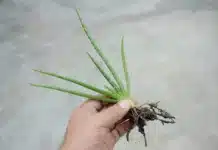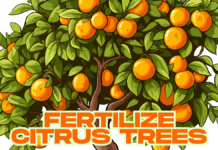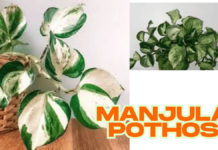When it comes to maintaining a flourishing garden, few challenges are as persistent and unpredictable as managing the impact of chickens on delicate borders. “Garden rescue” is not just a catchy phrase—it represents the careful, strategic process of reclaiming your outdoor space and restoring balance between flora and fauna. This is especially true for those following garden rescue season 10, where innovative solutions for garden restoration are demonstrated for both amateur and experienced gardeners. In this article, we’ll explore a comprehensive approach to tackling garden chaos, from relocating chicken coops to reshaping garden borders, and show you exactly how a well-planned strategy can turn a chaotic outdoor area into a thriving sanctuary.
The charm of a garden lies in its vibrancy and diversity, but it can quickly vanish when chickens are introduced. Their natural behaviors—scratching, pecking, and dust bathing—can decimate newly planted flowers and disturb carefully cultivated soil. Witnessing a garden destroyed overnight is disheartening, but with the right planning, recovery is not only possible but rewarding. By the end of this guide, you will be equipped with practical strategies, backed by experience, to achieve impressive garden rescue before and after results.
Assessing the Impact: Understanding Chicken Damage
Chickens are entertaining and beneficial in many ways, but they can transform a pristine garden into a bare, dusty plot faster than you anticipate. The first step in any garden rescue project is a thorough assessment of the damage.
Observing Chicken Behavior
Spend time monitoring your flock. Chickens tend to scratch in consistent patterns, often focusing on soft soil and tender shoots. Documenting these paths is crucial. Not only does it inform where fences should be placed, but it also helps anticipate future damage. From experience, even a small group of bantams can completely strip a flower border in a matter of weeks if left unchecked.
Documenting Destruction
Before making any changes, capture the current state of your garden. Photos or videos provide a baseline for measuring improvement and can be particularly useful if you are following tips from garden rescue season 10. Seeing the “before” image emphasizes the transformation that is possible with proper planning and effort.
Clearing Temporary Obstacles
Once the damage is assessed, prepare the site for intervention. Remove bricks, rocks, and debris that may obstruct construction or planting. Uneven surfaces not only make gardening difficult but can also create hiding spots for pests. A clean, leveled area ensures that any new structures, like a relocated chicken coop, sit firmly and last longer.
Managing Invasive Weeds
Nettles and other aggressive weeds are common along garden borders, especially near fences or water channels. Attempting to remove these without proper preparation can be dangerous. Focus on easily accessible clusters first, using gloves and clippers to trim them safely. For larger or riskier patches, seek assistance. Mapping these zones on a garden plan ensures that future plantings are protected and the weeds do not spread into newly rescued areas.
Relocating the Chicken Coop for Optimal Space
A key component of garden rescue is redefining space for both plants and poultry. Moving the chicken coop to a permanent, strategic location can prevent further destruction while improving the welfare of your flock.
Choosing the Right Spot
Select a location that provides a balance of sunlight and shade. Chickens need warmth in the morning and cool shelter during the afternoon. In my experience, placing the coop along a back fence line works well—it creates a clear boundary between the garden beds and the birds’ roaming area. Ensure the ground is leveled and, if possible, cement the base to enhance durability.
Safe Relocation
Relocating a coop is a team effort. Heavy lifting requires at least one strong helper to avoid injury. Slide the structure carefully onto the prepared site, checking that it is level and stable. The new position should allow chickens to access their dust bath and roaming area without interfering with flower or vegetable beds.
Creating Defined Zones
Zoning is essential for maintaining harmony between your plants and poultry. Designate a specific area for the chickens to roam and dig, separate from the flower borders. Incorporate a dust bath with a mix of sand and soil to meet the chickens’ natural grooming needs. Providing cover and shade, such as a trellis or small shelter, ensures the birds can enjoy the outdoors safely.
Managing Flock Dynamics
Transitioning chickens to a new coop requires understanding their social hierarchy. Larger hens can bully smaller ones, causing stress and chaos in the garden.
Observing and Dividing
Allow chickens to roam in shifts or separate runs to minimize conflicts. Watch how they interact and adjust zones accordingly. Even three bantams can cause significant damage if the fencing is inadequate. Testing the layout before full release is a practical way to ensure both plants and chickens remain protected.
Maintaining Peace
Secure fences and boundaries, particularly along high-traffic paths or near water. A mix of low wire barriers and physical reinforcements, like bricks or mesh, prevents escapes while keeping the birds safe. Regular monitoring ensures that the flock adapts to the new environment without reverting to destructive behaviors.
Soil Remediation: Turning Chicken Waste into Gold
Chickens provide a hidden benefit to any garden—fertile soil. However, to fully capitalize on this, proper handling is essential.
Sifting and Reusing Soil
Chicken droppings enrich soil, but care is needed to avoid spreading weeds or pests. Use a sieve or screen to sift soil collected from previously damaged areas. Removing roots and debris ensures the resulting soil is safe for planting in new beds. I have found that this process not only improves soil texture but also provides a cost-effective source of fertilizer.
Salvaging Existing Plants
Rescuing plants before they succumb to damage is a vital step. For instance, hostas can be divided and repotted, while overlooked seedlings like Sweet William can be relocated to safe zones. Transplanting immediately into fresh soil and providing adequate shade allows these plants to recover and thrive.
Securing Garden Edges
Future-proofing the garden against chicken encroachment is essential. Stack bricks or install low walls along vulnerable borders. Incorporate fencing that is both sturdy and removable for easy maintenance. This approach reduces repeated damage and saves time on continuous repairs.
Redefining Garden Borders: Integrating Perennials and Edibles
Transforming the long garden border is one of the most rewarding aspects of a garden rescue. By blending flowers with edibles, you create a space that is both beautiful and productive.
Creating a Kitchen Garden
Shift some perennial flower beds to accommodate herbs and vegetables. Carrots, beans, and herbs can be interspersed among blooms, creating a symbiotic environment where flowers deter pests from your food crops. Strategic placement of plants based on sunlight requirements maximizes both aesthetics and yield.
Protecting New Plantings
Chickens are naturally curious, so protecting new beds is crucial. Use low wire fences or brick edging to deter early digging. Test the layout with a few plants before expanding the garden, ensuring the borders are safe and plants establish quickly.
Maintaining Boundary Integrity
Fence maintenance is not just about protection—it also prevents neighbor disputes and keeps your garden secure. Reinforce weak points, check for gaps after storms, and trim vegetation along edges. These small measures prevent escapes and preserve the garden’s integrity.
Project Tidy Up: A Foundation for Seasonal Growth
A well-planned tidy up, as demonstrated in garden rescue season 10, lays the groundwork for ongoing success. From moving coops and zoning spaces to sifting enriched soil and planting mixed borders, each step contributes to a sustainable garden ecosystem. By thoughtfully combining flowers and vegetables, protecting borders, and managing the flock, you set the stage for a vibrant garden year-round.
The satisfaction of seeing a previously chaotic garden transformed into a well-ordered, thriving space is unmatched. Each stage—from soil preparation to planting—is an opportunity to blend creativity with practicality, achieving both beauty and functionality.
Pros and Cons of Garden Rescue Strategies
| Pros | Cons |
|---|---|
| Efficient use of space for both plants and chickens | Initial setup requires significant time and labor |
| Cost-effective soil enrichment using chicken waste | Requires ongoing monitoring of flock behavior |
| Protection of delicate plants from damage | Potential neighbor conflicts if boundaries are not secure |
| Opportunity to mix flowers and edibles for a productive garden | Seasonal adjustments may be necessary for extreme weather |
| Long-term sustainability with strategic zoning | Fencing and coop relocation may require investment |
Frequently Asked Questions (FAQs)
Q1: How often should I relocate my chicken coop?
A1: Permanent relocation is ideal, but minor adjustments can be made seasonally to balance sun exposure and protect sensitive plants.
Q2: Can chickens and flowers coexist in the same garden?
A2: Yes, with careful zoning and fencing, chickens can coexist without damaging flowers, as demonstrated in garden rescue projects.
Q3: How do I prevent invasive weeds from spreading after garden rescue?
A3: Remove surface roots, use gloves for manual trimming, and bag waste. For tough patches, seek help or use physical barriers.
Q4: What is the best soil mix for chicken dust baths?
A4: A blend of sand and loose garden soil works well. Ensure the area is dry, shaded, and protected from waterlogging.
Q5: How do I protect small or young chickens during the garden transition?
A5: Separate runs, stagger free-range periods, and observe flock dynamics. Adjust fencing to prevent bullying and escapes.
Conclusion
A successful garden rescue is a combination of observation, planning, and execution. By assessing damage, relocating the chicken coop, managing flock behavior, enriching soil, and redefining borders, you can achieve remarkable garden rescue before and after results. Integrating flowers and edibles maximizes both beauty and productivity, while careful zoning and boundary management ensure harmony between plants and poultry. Whether inspired by garden rescue season 10 or starting your first tidy-up project, the steps outlined here provide a structured approach to reclaiming and rejuvenating any garden space.
Transforming a garden is not just about plants; it’s about creating a balance between life, beauty, and practicality. Start small, plan strategically, and watch your garden evolve into a space that is both vibrant and resilient.


























